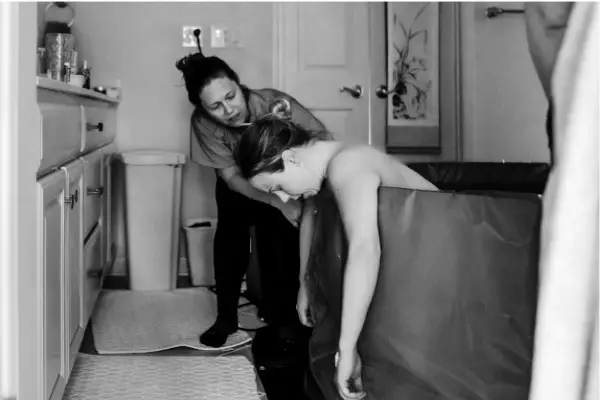Labor consists of 4 stages. It is the longest part of childbirth, which is why it is important to know what procedures are done during the duration and what interventions can be done by your obstetrician when your pregnancy does not go as planned. These are all done to make sure that you and your baby stay safe and healthy throughout the process of labor and delivery.
Table of Contents
Common interventions done during labor and delivery
Interventions are done by your healthcare practitioner when they need to alter or tweak the birthing process a little to assist you in the delivery of our baby. For example, you might not be able to deliver your baby without help because your baby might be showing signs of distress and needs to be born more quickly. These interventions should be discussed first with your doctor for you to understand why they might be necessary during your labor.
Induction of labor
Artificial ways of speeding up the labor process are done using the following methods:
• Pitocin-induced labor. This is the method of artificially inducing labor instead of waiting for contractions to begin naturally. It is used when there are multiple births, diabetes, kidney problems, high blood pressure, when the pregnancy is longer than 41 weeks, or for low amniotic fluid levels. Pitocin, a synthetic oxytocin is given via an intravenous route that helps the uterus contract and start the labor process.
• Labor induction with membrane sweep. A membrane sweep is done by the doctor. They manually manipulate the amniotic membrane by inserting their finger into the cervical opening, moving their hands in a circular motion to be able to sweep and separate the amniotic membrane from the cervix. This helps speed up the labor process especially when you are beyond your due date.
• Amniotomy. Amniotomy is an invasive method that involves of inducing labor by manually rupturing the amniotic sac using a hook-like instrument that is inserted through the vaginal canal. It is done for babies who are at risk inside the womb and need to be delivered fast. To prevent infection, the doctor will use a sterile equipment to rupture the membranes.
• Other labor-inducing procedures. Cervical ripening. This is the process in which your cervix needs to soften before the birth of the baby, so that it will open and allows the baby to pass through the birth canal. It may involve tablets, gels and ripening balloons.
Some non-medical induction methods such as acupuncture, homeopathy and/or herbs, sexual intercourse and nipple stimulation are also suggested for inducing labor.
According to the American College of Obstetricians and Gynecologists, reasons such as planning the baby’s birth date, minimizing end of pregnancy discomfort or having a large baby are not considered to be a valid reason for induction of labor. Unless there is a far more complicated reason, induction of labor is not recommended.

Electric fetal monitoring
Electric fetal monitoring is used to evaluate the uterine contractions and the vital signs of the baby in response to these contractions. There are different types of monitors used, such as the external monitor: This device is used to monitor and record the baby’s heart beat and your contractions. It is placed on the abdomen with the help of 2 belts, which serve as the ultrasound and pressure transducer, and telemetry units that allows movement while being monitored.Monitoring the baby’s heartbeat is used in assessing how well the baby is tolerating the process of labor. Low risk pregnant women are monitored intermittently, while those who are considered high risk are monitored 24-hours a day. Although fetal monitoring does not improve the outcome of pregnancy, it is proven to increase the rate of cesarean delivery.
Directed-pushing breath holding
In labor mothers are directed to take a deep breath and hold it for about 10 seconds before pushing during contractions. Your healthcare team will guide you throughout the labor process. Try changing your position and rest in between contractions to save your energy while preparing for the next contractions.
Assisted vaginal delivery
Also called “instrumental delivery”,assisted vaginal delivery is done when your doctor uses instruments such as vacuum extractors or forceps in order to assist you during the birthing process. It is done when your baby is stuck in the birth canal and is already experiencing respiratory distress. Using the instruments has its risks, as it may cause injury to both the baby and the mother.
Vacuum Delivery
This procedure makes use of a small suction cup that is placed over the head of the baby to assist in delivery. With the help of a pump to create suction along with the contractions of the mother, the baby is pulled down the birth canal and is ultimatley delivered. This suction cup may cause a superficial bruise over the head of the baby but it resolves within few hours after birth.
Forceps Delivery
This procedure involves the insertion of instruments into the birth canal to deliver the baby when it is stuck and there is fetal distress. A pair of instruments known as forceps are inserted inside the cervix and the baby is pulled along the canal. It is more risky procedure as compared to vacuum extraction as it may cause injury to both the mother and the baby.
Cesarean section delivery
When all interventions fail, the last resort would be to have a cesarean section. It is done under epidural anesthesia where an incision is made in the abdomen from which the baby is removed. It is indicated especially when the baby’s life is at risk or the baby is in breech position.
Epidural anesthesia helps reduce labor pain, especially when the mother is experiencing too much pain because of the labor.
Episiotomy
Episiotomy is performed during labor where a small cut is done in the vaginal wall to widen the vagina and assist in the delivery of the baby. It is recommended for babies who are having fetal distress,which causes their heart rate to increase significantly. Episiotomy is no longer a part of routine labor and delivery, and is only done in certain cases. Proper after care should be done to decrease the risk of infection.
How to avoid unnecessary birth interventions?
1. Attend childbirth classes.
Childbirth classes prepare you for the labor and delivery process of childbirth. It also teaches you some ways on how to manage pain, and the proper way of pushing during delivery. They also help decrease the anxiety that moms have about the delivery.








